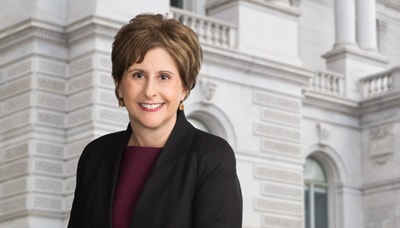Manufacturers, retailers, marketers and distributors alike, will be delighted to learn the restrictive “Made in USA” labeling standard in California was recently modified to more closely align with federal U.S.-origin claim requirements and global supply chain realities. However, California’s newly modified standard still is not entirely consistent with the U.S. Federal Trade Commission’s (FTC) standard.
On Sept. 1, California Governor Jerry Brown signed legislation into law that will ease California’s “Made in USA” labeling requirements effective Jan. 1, 2016. Previously, California law set the strictest standard for “Made in America” claims, requiring nearly 100 percent of a product’s content be domestically sourced in the United States.
The new law relaxes California’s stringent U.S.-origin labeling standard, which was established in 1961 in California’s Business and Professions Code (BPC) and which was interpreted strictly by California courts. The new standard allows products sold in California to be marked as “Made in USA” or “Made in America,” when a small part of the product’s contents are foreign-origin. Specifically, the legislation, known as SB 633, amends Section 1733.7 of California’s BPC by establishing the following new baseline for “Made in USA” labels in California:
- Foreign materials or parts do not exceed five percent of the final wholesale value of the merchandise; or
- If the manufacturer of the merchandise can show that it cannot obtain the materials or parts in the United States, then the total foreign content cannot exceed 10 percent of the final wholesale value of the item
- The law does not apply to goods offered for resale outside of California.
Neither the law nor legislative history explain the application of these exceptions by either defining the terms of the new law (e.g., “wholesale value”) or establishing acceptable calculation methodologies for these two, new bright-line tests. However, it might be instructive that California’s draft regulations for “Made in California” labeling requirements defined “wholesale value” as the summation of direct and indirect material and direct and indirect labor costs.
In contrast, the FTC’s standard in the Federal Trade Commission Act (FTCA) for “Made in USA” claims requires that a manufacturer be able to substantiate that a product is “all or virtually all” made in the United States to make a claim of U.S. origin. The FTC has consistently declined to define this standard in terms of bright-line percentages or to set a safe harbor threshold for acceptable levels of foreign content. Rather, the FTC considers each claim on a case-by-case basis and evaluates the totality of the circumstances.
Under federal law, qualifying a product for the “all or virtually all” made in the United States standard requires that all significant parts, processing and labor used to produce the product must be U.S.-origin. Three criteria are assessed, including: (a) whether the final assembly or processing occurs in the United States; (b) what portion of the total manufacturing cost of the product is attributable to U.S. parts and processing; and (c) how far removed any foreign content is from the final product.
The FTC guidance on “Complying with the Made in USA Standard” provides that manufacturers should use the cost of goods sold or inventory costs of finished goods in their analysis. Such costs generally are limited to the total cost of all manufacturing materials, direct manufacturing labor, and manufacturing overhead. Moreover, a manufacturer is required to look far enough back in the manufacturing process to be reasonably certain that it has identified and accounted for any foreign content.
With recent FTC enforcement actions extending beyond the expressly stated unqualified “Made in USA” claims, the FTC has provided further insight regarding how it perceives implied claims (e.g., images of an American flag or outline of the United States) and qualified claims (“Assembled in USA with Internationally Sourced Materials”). California statutes have not yet addressed these types of claims.
Nevertheless, the new California bright-line standard proposes a safe harbor by providing producers and distributors in California a new way to legally claim “Made in USA” for their products with some minimal levels of foreign content. The amended California law is also expected to reduce the recent surge of class-action lawsuits alleging violations of the stringent California standard. But beware: the new law neither harmonizes California’s “Made in USA” rules precisely with federal standards nor provides certainty regarding implied or qualified U.S.-origin claims. Indeed, manufacturers, retailers, and distributors will need to continue to comply with both the California and FTC standards if they are selling products in California. Yet, the new law does provide the essential first step toward easing the stringent California standard and aligning it with the FTC standard.
For more information, contact the Barnes & Thornburg attorney with whom you work, or one of the following: Karen McGee at (202) 408-6932 or karen.mcgee@btlaw.com; David Spooner at (202) 371-6377 or David.Spooner@btlaw.com; Devin Stone at 310-284-3868 or Devin.Stone@btlaw.com; or Linda Weinberg at (202) 408-6902 or linda.weinberg@btlaw.com.
©2015 Barnes & Thornburg LLP. All Rights Reserved. This page, and all information on it, is proprietary and the property of Barnes & Thornburg LLP. It may not be reproduced, in any form, without the express written consent of Barnes & Thornburg LLP.
This Barnes & Thornburg LLP publication should not be construed as legal advice or legal opinion on any specific facts or circumstances. The contents are intended for general informational purposes only, and you are urged to consult your own lawyer on any specific legal questions you may have concerning your situation.
Visit us online at www.btlaw.com and follow us on Twitter @BTLawNews.














